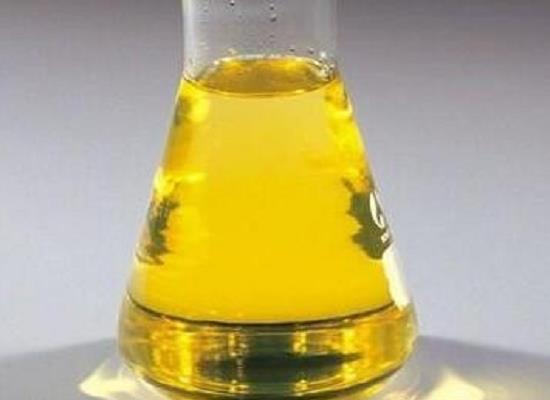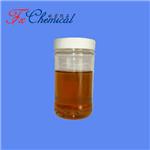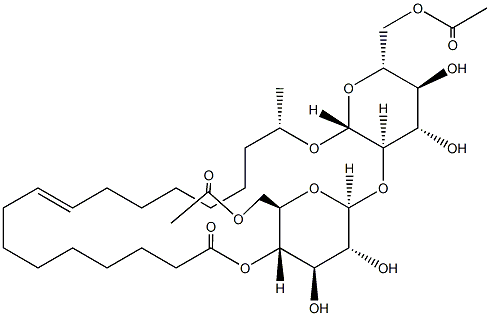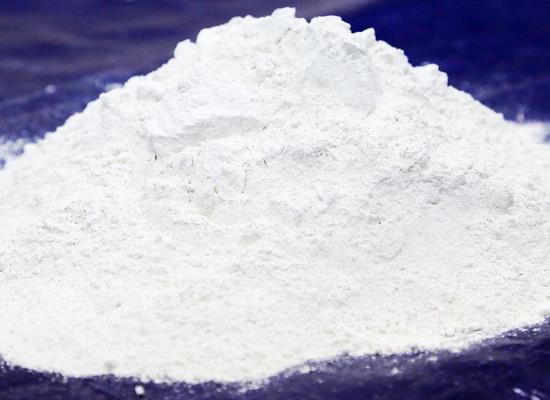Lactonic Sophorolipid: Nanoceria-Assisted Therapy and Preparation
General Description
Lactonic sophorolipid, derived from yeast, exhibits potent anti-cancer effects by inhibiting HDACs, impeding cancer cell growth. Its immunomodulatory and anti-inflammatory properties make it a versatile therapeutic candidate for cancer and inflammatory diseases. In nanoceria-assisted therapy for NSCLC, combining Lactonic sophorolipid with GT enhances anti-cancer efficacy through synergistic effects, reducing cell viability and metastasis. Prepared through fermentation, Lactonic sophorolipid production yields high concentrations of sophorolipid lactones, showing promise for innovative cancer treatments. Further research is needed to fully explore Lactonic sophorolipid's therapeutic potential across medical fields.

Figure 1. Lactonic Sophorolipid
Overview
Lactonic sophorolipid is a glycolipid compound derived from certain yeast species. Extensive research has highlighted its immunomodulatory and anti-inflammatory characteristics, making it a promising candidate for various therapeutic applications. Studies have demonstrated LSL's ability to exhibit anticancer properties against a range of cancer types, such as pancreatic, esophageal, and lung cancer. One significant mechanism through which Lactonic sophorolipid exerts its anti-tumor effects is through the inhibition of histone deacetylases (HDAC). By blocking these enzymes, Lactonic sophorolipid disrupts gene expression, ultimately impeding cancer cell growth and proliferation. This unique mode of action sets LSL apart as a potential treatment option for combating cancer. Moreover, the multifaceted benefits of Lactonic sophorolipid extend beyond its anti-cancer properties to encompass its immunomodulatory and anti-inflammatory effects. These properties not only contribute to its therapeutic potential in cancer treatment but also suggest its utility in managing various inflammatory conditions. Overall, Lactonic sophorolipid emerges as a versatile and promising molecule with diverse biological activities, offering a novel approach to addressing cancer and inflammatory diseases. Further research and clinical studies are warranted to fully explore the therapeutic potential of Lactonic sophorolipid across various medical fields. 1
Nanoceria-Assisted Therapy
Nanoceria-Assisted Therapy of Lactonic Sophorolipid represents a novel approach to combat Non-Small-Cell Lung Cancer (NSCLC), particularly in cases where resistance to conventional therapies has emerged due to oncogenic K-RAS mutations. Lactonic Sophorolipid, known for its ability to inhibit histone deacetylase (HDAC) activity, is combined with ganetespib (GT), an Hsp90 inhibitor, to target NSCLC cells with K-RAS mutations. In a study, a functional antioxidant nanomedicine comprising nanoceria (NC) encapsulated with a cocktail of Lactonic Sophorolipid and GT is developed to enhance the therapeutic efficacy of LSL and enable targeted combination therapy for NSCLC. The nanoceria serves as a redox platform to amplify the anti-cancer effects by targeting both HDAC inhibition and Hsp90 signaling pathways in NSCLC. Through various cell-based assays, it was observed that the combination of Lactonic Sophorolipid and GT within the nanocarrier resulted in synergistic effects, leading to enhanced Hsp90 inhibition and increased intracellular reactive oxygen species (ROS) levels. This combination therapy demonstrated significant reduction in cell viability, inhibition of metastasis, and activation of apoptotic pathways in NSCLC cells. Overall, the results suggest that the nanoceria-assisted combination therapy of Lactonic Sophorolipid holds promise as an effective treatment strategy for NSCLC, particularly in cases involving K-RAS mutations. Further research and clinical studies are warranted to explore the full potential of this innovative therapeutic approach in the management of NSCLC and related cancer conditions. 1
Preparation
Lactonic Sophorolipid were prepared through a fermentation process yielding an overall volumetric productivity of 0.9 g/L·h, with a peak productivity of 1.7 g/L·h achieved 72 hours after inoculation. The overall yield was calculated at 70.3%, considering the amount of product formed per amount of substrate (glucose and oil/oleic acid), including biomass generation. The main products obtained were C18:1 sophorolipid lactones, with a small fraction of nonacetylated sophorolipid acids, which can be eliminated during purification. In comparison to a small-scale reactor experiment using rapeseed oil as the carbon source, the fermentation process resulted in a final sophorolipid concentration of 139 g/L, with a volumetric productivity of 0.94 g/L·h and an overall yield of around 60%. The purified Lactonic Sophorolipid were obtained as a white powder, demonstrating successful modification from the fermentation batch. 2
Reference
1. Naz S, Banerjee T, Totsingan F, Woody K, Gross RA, Santra S. Therapeutic Efficacy of Lactonic Sophorolipids: Nanoceria-Assisted Combination Therapy of NSCLC using HDAC and Hsp90 Inhibitors. Nanotheranostics. 2021; 5(4): 391-404.
2. Elisabeth IP. Sophorolipid Amine Oxide Production by a Combination of Fermentation Scale-up and Chemical Modification. Industrial and Engineering Chemistry Research. 2016; 55(27): 7273-7281.
You may like
Related articles And Qustion
Lastest Price from Lactonic Sophorolipid manufacturers

US $0.00-0.00/KG2025-04-21
- CAS:
- 148409-20-5
- Min. Order:
- 1KG
- Purity:
- 98%min
- Supply Ability:
- 30tons/month

US $0.00-0.00/kg2024-08-29
- CAS:
- 148409-20-5
- Min. Order:
- 1kg
- Purity:
- 99%
- Supply Ability:
- 1ton



